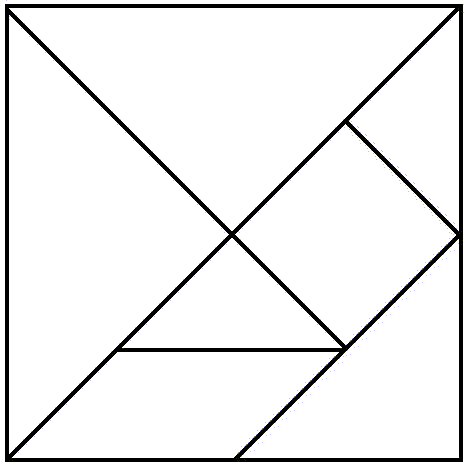Tangrams are perhaps the oldest and most enduring of all geometric puzzles. This simple, seven-piece puzzle originated in China and dates back to the 18th century. It’s been popular for hundreds of years because despite its simplicity, this puzzle can challenge learners of all ages and abilities.
All seven pieces fit together to form a perfect square—making storing it one of the trickiest puzzles of all! When separated, these pieces can be rearranged into infinite possible formations and provide a creative opportunity to practice spatial awareness skills like rotation and translation, and to recognize those key attributes of size, position, direction, and movement. (See The Learning Trajectory.)
“Look, Make, Fix”
Follow along with this video to play a game of “Look, Make, Fix.” All you need is your own tangram pieces! (Download a template HERE.)
Questions for Reflection
What geometry skills did you notice being activated through the game of “Look, Make, Fix”?
What was your emotional experience of the game? Did you feel frustrated, confused, surprised, or even excited? How do those feelings shape who you are as a mathematician?
Think about your students’ experience of this game and what supports you might put in place for the social-emotional development of the mathematicians in your classroom.
“Look, Make, Fix” is a fun game to play as a class, in small groups, or with a partner. (Use a piece of cloth or paper to hide your shape during the “Make” part of the game when playing with others.)
The tangram puzzle is especially fun when creating shapes from the real world, especially animals like in our Literacy Connection with “Grandfather Tang’s Story.” Recreating known objects rather than abstract shapes is a great way to scaffold young children’s learning when using the tangram puzzle.
Additional Resources
The activity “Look, Make, Fix” above was adapted from “The Young Child and Mathematics” by Juanita Copley.
Check out this virtual tangram builder from Mathigon.
See Literacy Connections next for ideas to mathematize these concepts with children’s literature.




